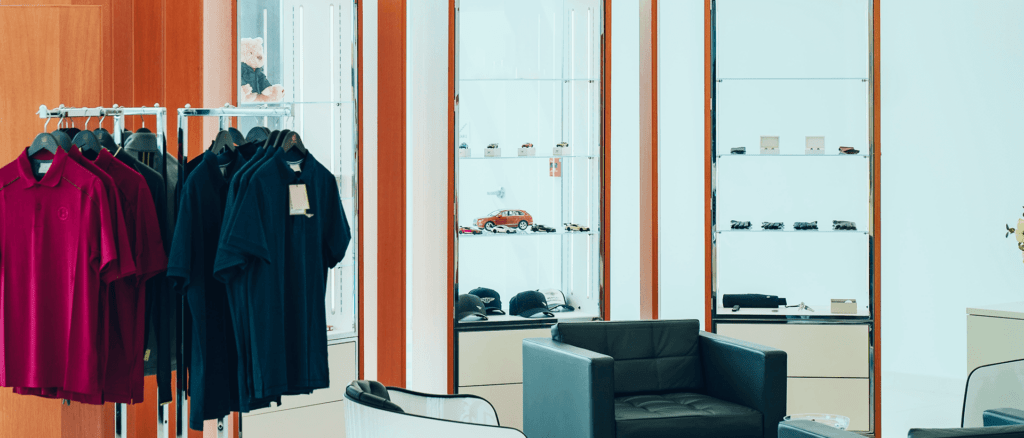The luxury retail industry has undoubtedly undergone massive changes over the past years — mainly due to shifting consumer behaviour and the relentless march of digitisation.
As the luxury retail industry evolves and transforms, forward-looking businesses actively seek alternative tools to reinvent themselves and stay ahead of the competition while adapting to their customer’s ever-changing needs and preferences.
To do this, location-based data has become an indispensable component in every luxury retail business toolbox.
By leveraging the power of luxury retail location intelligence, these brands gain valuable insights into consumer behaviour, enabling them to personalise experiences, optimise operations, and develop targeted marketing strategies and loyalty programs.
With location-based data as a strategic asset, luxury retail brands are redefining their approach to meet the demands of the modern consumer landscape.
In this blog, we’ll delve into this shift in consumer behaviour and identify the reasons behind these changes.
Finally, we’ll look at how location-based data transforms the luxury retail industry and how it can revolutionise your growth strategy.

Understanding today’s luxury retail consumer behaviour
Like most other industries, the luxury retail industry has been revolutionised with the ongoing digital transformation.
The following are just a few of the main changes observed, which can be turned into opportunities using the right tools:
Digital and eCommerce are on the rise
Particularly following the pandemic, consumers increasingly lean towards eCommerce solutions for their luxury purchases. Figures quoted on Statista say that 25% of global luxury goods sales are expected to be made online by 2025.
This has led to a massive movement in luxury eCommerce as businesses continue looking at ways to improve their online reputation and experience.
One other factor contributing to this shift is a change in demographics.
Millennials and Gen Z are gaining more spending power — two generations that either grew into the digital age (millennials) or were born fully in the Internet age (Gen Z).
Statistics cited by Save My Cent indicate that Millennials are responsible for 33% of all personal luxury purchases.
Similarly, numbers quoted by Business Insider estimate that by 2030, Gen Z and Gen Alpha (i.e. those born between 2010 and early 2020s) will make up a third of the luxury-good market.
Considering the generational factor and the overall shifting behaviours following the pandemic and the ongoing digital transformation, investing in a robust eCommerce platform and optimising their user experience around the expectations and preferences of their audience has never been more critical for today’s businesses.
Customer-centric omnichannel experiences
The luxury retail industry has always focused on a customer-centric approach — both online and offline.
In the online sphere, virtual shopping is synonymous with personalised experiences and products.
We’ve already seen the impact online shopping has on how consumers interact and behave within the luxury market.
Especially considering the enormous amount of information and content consumed by the average individual daily, brands focusing on personalised recommendations, including targeted marketing campaigns, are already one step closer to making a sale.
And, despite the steady increase in digital trends such as eCommerce solutions, there’s still plenty of room for in-person and in-store experience opportunities for luxury retailers to experiment with and implement.
Luxury retail still thrives in physical stores. After all, people buying luxury products aren’t simply purchasing an item. They’re buying a high-end product, which in turn means investing in a lifestyle, exclusivity, and assurance of quality and value.
Customers still prefer to inspect, touch, and try on products before buying, especially when they come with a premium price tag.
This is why the in-store experience is crucial, with numerous options available thanks to online shopping.
There’s also been an incredible boost in click-and-collect buying methods over these past years. The Insider Intelligence has estimated that click-and-collect sales will surpass the $100 billion mark in 2023 in the US alone.
This situation has highlighted the significance of making customers happy and ensuring an overall positive customer experience.
It has also prompted retailers to strengthen their online and physical presence — in a bid to integrate and harmonise online shopping, traditional stores, and the newer option of click and collect.
Regardless of what intention, retailers must offer something unique that cannot be obtained online to attract customers to spend their valuable time shopping.
And this experience should go beyond the typical customer-vendor interaction and contribute to establishing brand loyalty.
Sustainability and conscious consumption
By now, sustainability has become a default rather than an option for brands. Increased awareness about the importance and need for eco-friendly practices have raised the bar for businesses to prioritise sustainability in their operations.
According to a study conducted by Tata Consulting Services, a significant majority of consumers (86%) are concerned about the sustainability and responsible sourcing of the products they purchase. Additionally, almost 7 out of 10 (69%) reported paying more for sustainable and responsibly-made products recently.
This incredible shift has led brands to extend their efforts beyond their internal operations.
There’s an increased demand for them to be transparent and engage in responsible supply chains while ensuring their partners and suppliers adhere to similar sustainability standards.
Added focus on sustainability has resulted in an innovative approach to product design and packaging, with most brands prioritising using recycled or ethically sourced materials while exploring biodegradable alternatives.
All these efforts are more than just beneficial to the environment and resonate with consumers looking for environmentally conscious options.
In short, consumers expect brands to be more accountable, especially audiences that are more digitally engaged.
According to the State of Luxe 2022 report, 39% of High Net Worth Individuals (HNWI) look for eco-friendly or ethical credentials in luxury items — ranking among the top eight factors mentioned by respondents.
Businesses now understand the importance of communicating their sustainability efforts to consumers. They recognise the impact of storytelling on their brand image and are careful not to engage in greenwashing or performative activism.
By providing transparent reporting on sustainability practices, certifications, and achievements, consumers can make informed choices and connect with brands that share their values.
How can sustainability boost your business?
Check out our free eBook to discover how harnessing the power of Big Data can guide you on your journey towards becoming more sustainable.
Location-based data and the luxury retail industry
Location-based data, known as location intelligence, is changing the retail sector by the minute.
And, especially when seen against the emerging trends we’ve covered above, it’s easy to see how and why.
Location intelligence uses geographic data and spatial analysis techniques to gain insights and make informed decisions.
In other words, location intelligence involves gathering, analysing, and interpreting location-based information to understand patterns, relationships, and trends related to specific geographical areas.
This sort of information is priceless within the luxury retail industry.
When brands have a better understanding of visitor and consumer behaviours, trends and demographics, as well as an insight into the perception of their products and services, they can create better marketing campaigns and sales strategies, enabling them to win the market, target their budget and efforts effectively, and ultimately, create the best possible customer experience.
As a retailer, understanding where your products are sold and who your buyers are can support you in choosing the right new markets and distributors and strategically placing new points of sale.
This understanding can also help retailers optimise their online presence, providing a smooth experience for consumers visiting both your website and your physical store.
Combining location data and ready-available in-store and online data (such as sales, stock, number and types of products sold etc.) provides a truly comprehensive understanding of customer interactions.
Enriching your existing system with location data takes personalisation to a whole new level — boosting the shopping experience by delivering targeted marketing campaigns. It’s also a way of optimising inventory management, saving costs, reducing waste, and improving profitability.
Similarly, this combination of location, online, and in-store data is crucial for luxury retailers to stay ahead in the emerging metaverse world.
It allows them to create seamless experiences across virtual and physical realms, creating immersive interactions that resonate with tech-savvy and avant-garde luxury consumers while ensuring their relevance and success in this evolving retail landscape.

5 use cases for luxury retail location intelligence
1. Retail site selection
One of the most common use cases for luxury retail location intelligence is site selection.
Location-based data can help retailers understand where to open their next store, estimate the revenue they can generate from a location, and understand the customer potential in a particular area.
In luxury retail, brands need to prioritise the exclusivity and perception of their locations. It’s not just a matter of the products they offer but also of where they offer them and the ambience, status, and prestige associated with their chosen location. All these factors contribute to their brand image, as well as their customer appeal.
By analysing the popularity of an area and the sentiment around it, retailers can better understand not just the number of people that frequent a specific neighbourhood but also the feelings they’ve expressed towards that particular area.
2. Improved sustainable choices
Luxury retail location intelligence data can help brands make more sustainable decisions, primarily by identifying the geographical proximity of potential suppliers and distributors to their retail locations or distribution centres.
To enhance their supply chain logistics, brands can benefit from choosing suppliers and distributors nearby. This can result in lower transportation costs, shorter lead times, and more efficient inventory management.
Additionally, proximity promotes improved communication, collaboration, and responsiveness between the brand and its suppliers or distributors, leading to smoother operations and higher customer satisfaction.
Finding suitable suppliers and distributors who can effectively reach your target market as a luxury brand can be challenging. However, with the help of location intelligence, you can quickly identify the areas with the most potential and examine the demographics, trends, and buying power of consumers in those regions.
This way, you can connect with suppliers and distributors with a strong presence in affluent or emerging luxury retail locations, which can help you meet the demand and grow your business, and making the overall process less daunting.
3. Enhanced customer experience and merchandising
Retailers can gain valuable insights into customer behaviour and preferences using luxury retail location intelligence, allowing them to provide a personalised, improved customer experience.
This kind of data enables retailers to run targeted marketing campaigns so that customers can receive promotions and discounts that apply to them.
In doing so, they create an improved and homogenous customer experience. And investing in this will pay off in multiple ways, such as:
-
-
- Customer loyalty: A positive customer experience will likely draw customers to make further purchases. Plus, studies, including one by Invesp, show that investing in new customers can be up to five times more expensive when compared to retaining existing ones.
- Customer recommendations: Word-of-mouth recommendations are the lifeblood of many businesses, especially in the era of social media and influencer marketing. A better customer experience will probably lead to higher customer satisfaction, which can transform into positive online reviews, testimonials, or traditional in-person recommendations. Plus, it’s likely to increase your Net Promoter Score (NPS), indicating your clients are loyal and that most of your customer base is happy with your outstanding customer experience.
- Boosted profits: Improved customer loyalty and retention rates, more recommendations and conversions, a higher NPS score, and happy customers ultimately all lead to greater profits in the short- and long-term of your business.
-
Similarly, retailers can leverage data to make better merchandising decisions.
Businesses can tailor their product assortments, pricing strategies, and marketing campaigns to meet local preferences and needs by analysing data such as demographic information and purchasing patterns.
For instance, luxury retailers observing an influx of affluent tourists in specific locations and the duration of their visits can decide to place products and promotions differently than, say, areas with returning local customers.
This data-driven approach ensures that the retailer maximises their opportunities to attract and engage with customers visiting those areas, optimising their budget and efforts, too.
4. Targeted marketing and advertising strategies
Location intelligence supports luxury retailers in developing targeted marketing and advertising strategies by leveraging customer data and geographic information.
By identifying specific regions with a high concentration of their target audience, retailers can focus their resources and budgets to create tailored marketing campaigns, out-of-home advertising strategies, offers, and promotions — all of which resonate with local markets.
Meanwhile, geo-targeted advertising enables brands to reach potential customers in specific locations and develop tailored strategies and messages for different regions.
In addition, this tool helps brands understand their competitors and identify gaps in the market, which can help them stand out and attract customers.
Using location data, luxury retailers can improve their marketing strategies, increase brand visibility, drive more customers to their physical stores, and ultimately increase sales and customer engagement.
5. Performance management
Having access to location intelligence data is essential for effectively managing performance in the luxury retail industry, as it offers valuable insights that can be used to track, analyse, and optimise various aspects of the business.
This kind of information is indispensable for monitoring physical stores and online channels, analysing sales data, popularity, and conversion rates by location, identifying high-performing stores and replicating successful strategies.
Similarly, as a retailer, you can monitor the impact of targeted messaging and geo-targeted advertising to optimise ROI through location data.

Location intelligence is undeniably one of the most powerful and forward-looking tools luxury brands have to understand their customers and truly make data-powered decisions.
At Data Appeal, we know location intelligence’s immense value in driving growth for luxury brands. Over the years, we’ve been trusted by leading companies across multiple industries to provide them with our location intelligence solutions. You can read some of our customer success stories here.
Our location intelligence solutions are a distinctive mix of geospatial and perception data and actionable insights, helping brands improve their business strategies and understand which areas have the most potential.
In today’s dynamic market landscape, gaining real-time insights into your current and potential market is an indispensable tool for growth.
And, especially for luxury retail — an industry that relies on personalisation and brand loyalty — location data is the way forward to create meaningful connections with customers, drive innovation, and stay ahead of the curve.
Unleash your luxury retail brand growth potential
Discover a world of opportunities for your luxury business through location intelligence.





